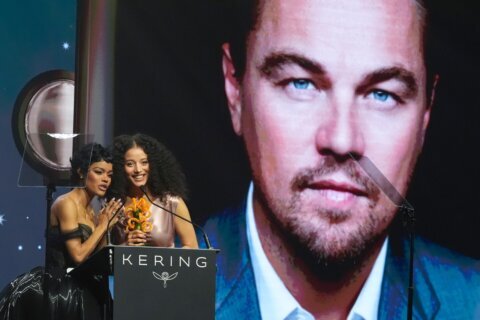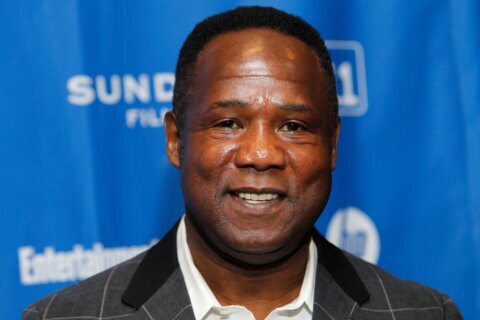Hear our full conversation on my podcast “Beyond the Fame.”
The Marshall Tucker Band is celebrating its 50th anniversary of Southern rock gold. This Sunday, the celebratory tour rolls right into Capital One Hall in Tysons, Virginia.
“It’s a mixture of all the old and the new and things we haven’t done in quite a while,” original lead singer Doug Gray told WTOP. “I never follow a set list, so if somebody in the audience screams something out, I have the ability to come up with the lyrics, and the band says, ‘hey, I know that song,’ and they’ll come in, too.”
Born in 1948 in Spartanburg, South Carolina, Gray played with bass player Tommy Caldwell in a high-school band called The New Generation. This soon merged with another band, The Rants, featuring Tommy’s brother Toy Caldwell on guitar and Jerry Eubanks on sax, keys and flute. The new band was fittingly called The Toy Factory.
“We all went to the same high school but one person,” Gray said. “Everybody said, ‘We’ve got to go in the military,’ the war was going on. Toy went first, I went second, Tommy third.”
Upon returning from Vietnam, the band morphed into Marshall Tucker Band in 1972, as Gray, the Caldwells and Eubanks added George McCorkle on rhythm guitar and Paul Riddle on drums. No one was named Marshall Tucker — so how did they get the name?
“We said, ‘Why don’t we find a place to rehearse?'” Gray said. “It was about 100 square feet, smaller than a hotel room. We started going there twice a week for about an hour and a half. … We found a key to open the door to let us in. On the key there was a tag that had ‘Marshall Tucker’ on it. Marshall Tucker is still alive, he was a blind piano tuner.”
That’s right: The band was named after a blind piano player from South Carolina.
“He left Spartanburg to pursue a dream of being a choir instructor in Columbia, South Carolina,” Gray said. “We have stayed in touch … he never was part of the band, but he loved the fact that we weren’t tearing his name up, throwing televisions out the window … everybody had to have him because he was pitch perfect. He could tune a piano so well.”
In 1973, they signed with Capricorn Records to release their self-titled debut album, featuring the lead single “Can’t You See,” which remains their most iconic song.
“We had real producers during the Muscle Shoals hot time period,” Gray said. “That’s one of three songs out of 330 songs that I didn’t sing. … Toy came up with it, and when I heard him sing it, I said, ‘My God, I can’t sing it like that.’ My voice was a little smoother and his voice was testifying. That’s why they like it in certain movies.”
The other side of the album featured the explosive song “Ramblin’,” which coincidentally arrived the same year that The Allman Brothers released their hit “Ramblin’ Man.”
In 1974, they delivered two more albums, “A New Life” and “Where We All Belong,” but it was their fourth album “Searchin’ for a Rainbow” (1975) that featured their Top 40 hit “Fire on the Mountain,” which included the late Charlie Daniels making a cameo on fiddle.
“Charlie played on our first four records,” Gray said. “Rod McKuen played on it as well, guys from Tower of Power came in and played on certain records. Everybody wanted to play with Marshall Tucker because we took it to a new groove. It was like a jazz band, everybody bring your instrument and play whatever you brought, and we made room for each person.”
Their fifth album “Long Hard Ride” (1976) delivered a galloping title track, followed by their sixth album “Carolina Dreams” (1977), which featured “Heard It in a Love Song.” The song became their highest-charting hit single at No. 14 on the Billboard Hot 100.
“For a whole year, we had that song finished except for my lead vocals,” Gray said. “‘This is going to be the weakest song on the record.’ … I just put it off for a whole year. They said, ‘We’re getting ready to put the record out, do you want that song on there?’ I went, ‘Ugh, I’ll go down and try it one more time.’ Within three weeks of its release it became a teeny bopper song!”
Today, Gray is the only remaining original member of the band.
“What makes Marshall Tucker Band think we could be around for 50 years is the loyalty of our crowds,” Gray said.
Hear our full conversation on my podcast “Beyond the Fame.”








